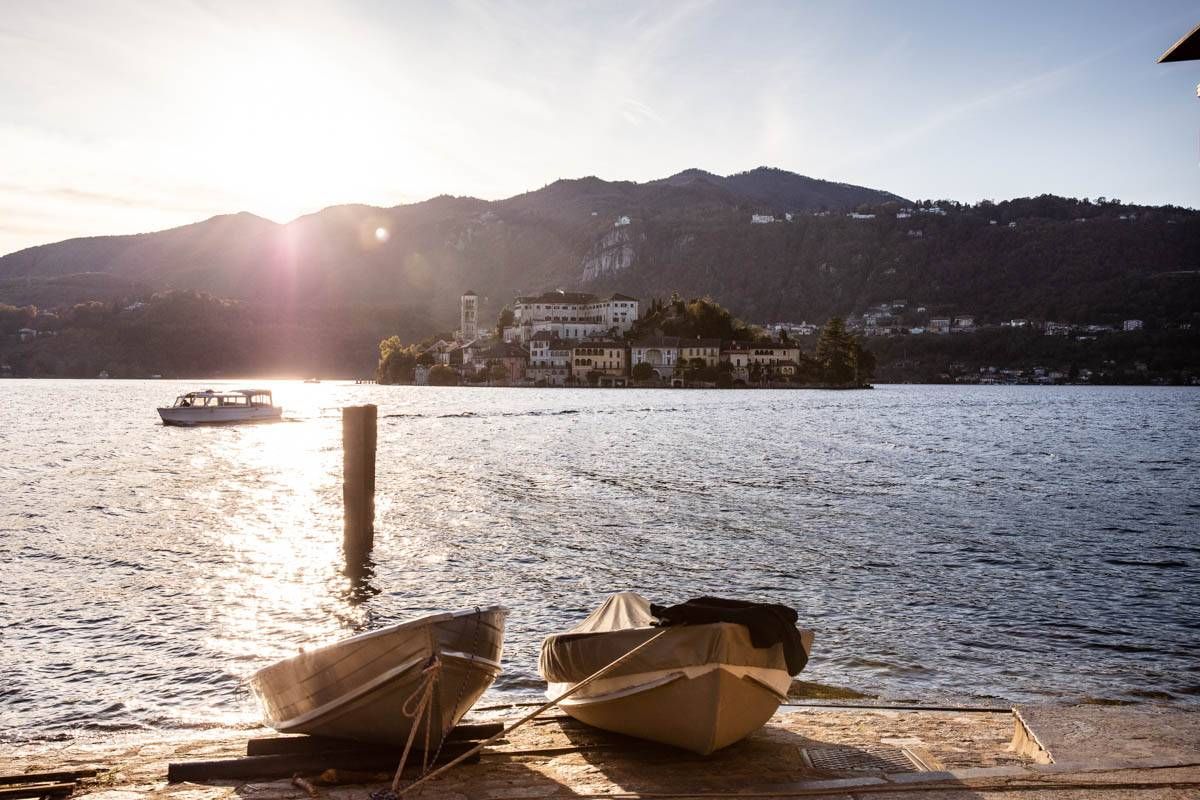Is a village on Lake Orta known for its numerous palaces and stately villas as well as for its incredible natural beauty.
Also known as the “town of artists“, Ameno, situated on the eastern shore of Lake Orta amidst the hills, has very ancient origins. The area has been a tourist destination since the 18th century; nearly 500,000 tourists visit each year. Numerous aristocratic villas were built here at the turn of the 18th and 19th centuries. They can now be visited during the annual “Cortili e Giardini Aperti” event when their gardens are opened to the public and you can enjoy these historic estates. What other cultural, artistic and natural sites are worth visiting during a weekend in Ameno?
Ameno, a cultural excursion among churches and villas
On a religious note, the Chiesa Parrocchiale di Santa Maria Assunta (the parish church) in Ameno is an example of medieval architecture, with its three naves, flanked by a late-Romanesque bell tower built with granite stones. The church seems to date back to the second half of the 14th century. The Convento di Monte Mesma is another cultural landmark you just have to stop and see while visiting Ameno. Its particularly picturesque position makes it possible to admire a magnificent view of the entire Po Valley, including Milan and Novara. The Franciscan convent, which is 576 meters high, was built in 1619 from the remains of a castle which was the stage of hostile clashes between Novara and the local diocese. The convent has two baroque cloisters, which lead to a gabled church with interesting paintings inside. The convent can also be reached by traveling along two mule tracks which leave just outside the neighborhoods of Bolzano and Lortallo.
Palazzo dei Conti Tornelli, Palazzo del Marchese Solaroli, Villa del Conte Agazzini, Casa Cotta, Villa Obicini, Palazzo Vegezzi, Casa Pestalozza and Villa Reiser are just some of the historic villas and palaces characterizing Ameno. This Renaissance trousseau is crowned by the Casa Calderara, home of the painter Antonio Calderara. It is an example of bourgeois architecture, distinguished by a triple arcaded portico of granite columns and which was built at the end of the 16th century. Currently this building is a foundation housing and protecting 327 works of art, all collected by Calderara and of which 271 belong to 133 European, American, Japanese and Chinese artists.
Villa Monte Oro is an illustrious Liberty-style example located at the beginning of Ameno. Designed by Carlo Nigra in 1926, this complex includes multiple two or three storey buildings. The vast park covering the entire hill on which stands the villa at the top is both unique and spectacular; in fact, inside you can find an incredible variety of rare conifers, azaleas, rhododendrons and secular beeches.
Discovering Ameno’s protected natural heritage
As far as Nature is concerned, in Ameno, Monte Mesma is one of its most important sights. In fact, in addition to being able to hike along the two mule tracks mentioned above to reach the Franciscan Convento, you should know that this area is also a Nature Reserve. The slopes of the mountain are rich in vegetation. In particular, you’ll find woods full of chestnut and oak trees. The entire area is also home to a remarkable archaeological site, with artifacts of Celtic origin and materials from the Gallic and Roman-Imperial periods.
In front of Palazzo Tornielli, also in Ameno, there is a Neo-Gothic park. Originally this green area was connected to the building by an underground passage, and opened to the public in 1920. During renovations from 2007 to 2011, the original beauty and splendor of this place was brought to light – trees centuries-old, flowerbeds with native species, a traditional pavilion with floral décor, an old ice-house and a tower are just a few of the elements characterizing the charm and uniqueness of Ameno’s Neo-Gothic Park.
